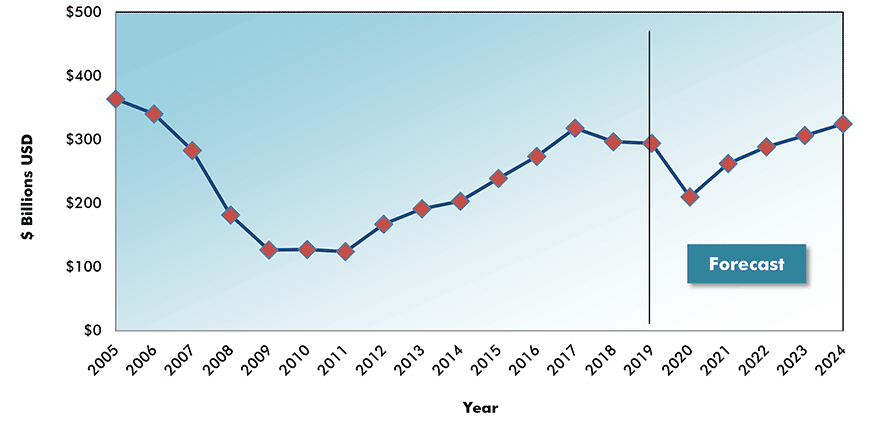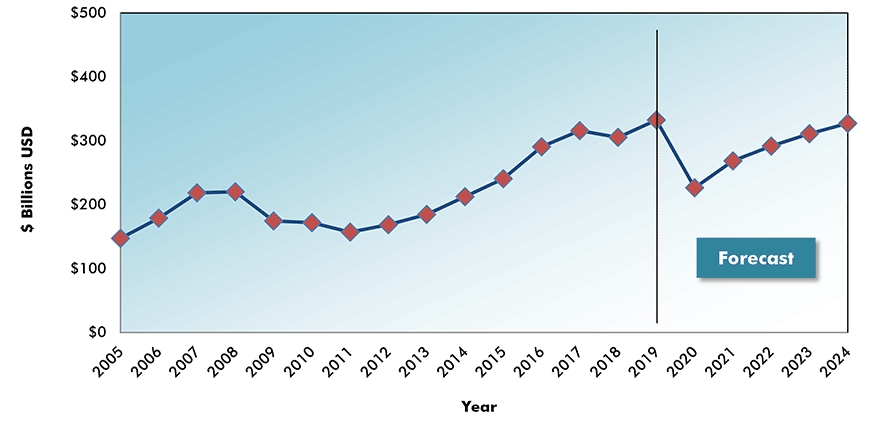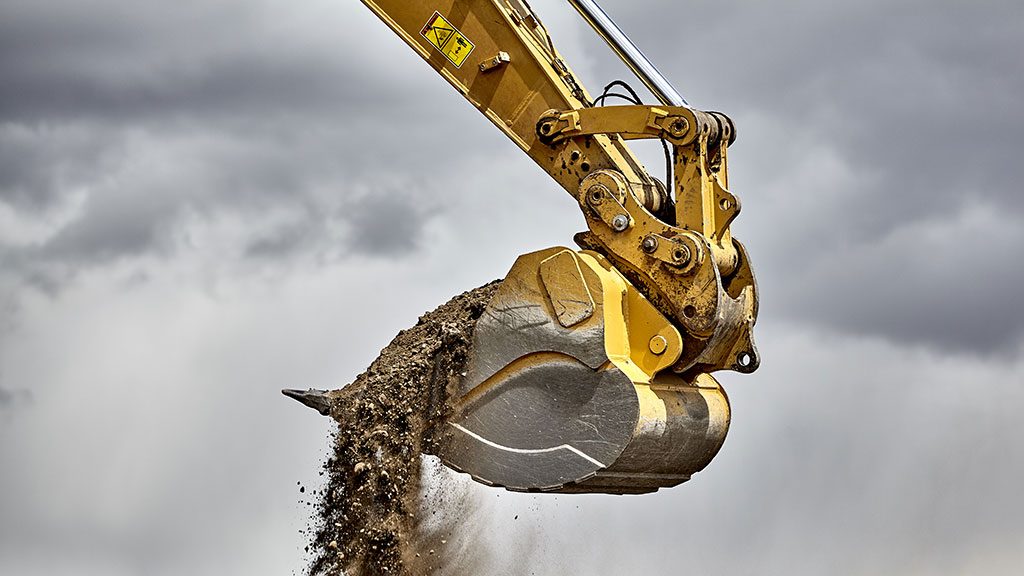ConstructConnect, in its latest (Summer) quarterly construction starts forecasts, is projecting -27.4% for 2020/2019 grand total dollars and -24.6% for square footage.

So why the big drop?
By the way, ‘real’ (inflation-adjusted) GDP is likely to be something like -6% (annual/annual) and that is a big decline. The Q/Q change annualized in Q2 will be something like -25% to -30%.
Put-in-place construction spend numbers are much smoother than starts. They include a large percentage of work that is carried over from last year, so they’re not relevant for assessing what is occurring today. The put-in-place total, 2020/2019, will be on the order of -6% to -8%.
Now we come to construction starts. As background, in the last recession (2008-2009), the cumulative decline in ConstructConnect’s total starts through both years was greater than -30%.
In Q1 2020, our total construction starts were already -9.1% year to date versus Jan-Mar 2019. And that was before the economy took a really bad turn entering April.
Also, keep in mind that 2019 starts were supported by 35 mega projects ($1 billion or more each), contributing 15% of the year’s total volume. There won’t be anything like 35 such projects getting underway in 2020.
Much of the engineering work last year was in the energy field – refineries, LNG projects, etc. With the price of oil (and natural gas) now so low, there’s not likely to be much new energy patch construction out to the end of 2020. (There may be a beginning on the Keystone XL pipeline expansion, but we’ve heard this song on previous occasions, to no effect.)
Let’s look at residential construction. It was quite robust entering 2020, supported by two pillars – a healthy labor market, providing good income growth, and decent increases in population.
Since the ‘great shutdown’, 30 million Americans have requested unemployment insurance. April’s jobless rate will be approximately 20%. Nor will those individuals all be hired back right away, as the economy re-opens. Ongoing social distancing will keep traffic in stores, restaurants, cinemas, etc. to a minimum for at least a while, and that will mean lower revenues for owners and holds placed on thoughts of expansion.
Plus, there are entire sectors, which formerly accounted for major portions of local economies, that are in crisis mode – passenger cruise lines (Miami and L.A.), airlines and airports (all major cities), oil rig drillers (Texas, Colorado).
So one pillar of strength for housing (strong employment) has been uprooted. Also, owners of second properties (e.g., income-earning condo units), faced with delinquent rents, may decide to sell, expanding the supply of existing units and reducing the need for new groundbreakings.
Also, consider that population growth is a traditional driver of residential construction (and many other types of construction). In recent years, U.S. pop growth has been declining to the point where in 2019, it was only +0.5% y/y. But it was still positive. Births have been falling for years, so the increase has been coming from immigration.
Now, there is no immigration, neither legal nor illegal. Bottom line, there’s not much population growth taking place. The U.S. is about to enter the zero-population growth club that already has Japan and several countries in Europe as members.
Many companies are discovering they can carry on operations with their workers functioning from home. Top execs must be wondering why they are paying big rents to occupy space in office towers. If I was a developer, I’d be working on a strategy to hang onto my tenants, as it’s going to be a harder sell than in the past. Also, employees will be increasingly reluctant to crowd into lobbies and take a cramped elevator ride.
Retail was moving to the Internet before the coronavirus crisis began and that trend will be accelerating, meaning little need for additional square footage. Also, there’s the not so small matter of ‘overhang’ – i.e., empty retail space from store closings that will need to re-leased first.
Warehouse and fulfilment center construction will be a positive, however. Use of robotics will receive a boost.
Enrolments in institutions of higher learning were dropping before this latest ‘softness’ and students are becoming acclimatized to receiving instructions from the best teachers online. Also, the endowment funds (sources of capital spending dollars) for many upscale universities have taken some hits from stock market zigs and zags.
A clear need for medical facility and nursing home construction has become apparent. Most important here, though, will be design feature changes to enable better handling of patient ‘isolations’ when needed.
So those are some of the influences that led to our forecast downgrade. We could well be wrong. Maybe a cheerier sentiment will carry starts upwards faster than we’re presently anticipating. If so, we’ll adjust our numbers next quarter, when we do July revisions.
But I suspect there’s a lot of wishful thinking that’s taking place at the moment.

Chart: ConstructConnect.

Chart: ConstructConnect.

Chart: ConstructConnect.

Chart: ConstructConnect.
Alex Carrick is Chief Economist for ConstructConnect. He has delivered presentations throughout North America on the U.S., Canadian and world construction outlooks. Mr. Carrick has been with the company since 1985. Links to his numerous articles are featured on Twitter @ConstructConnx, which has 50,000 followers.











Recent Comments
comments for this post are closed